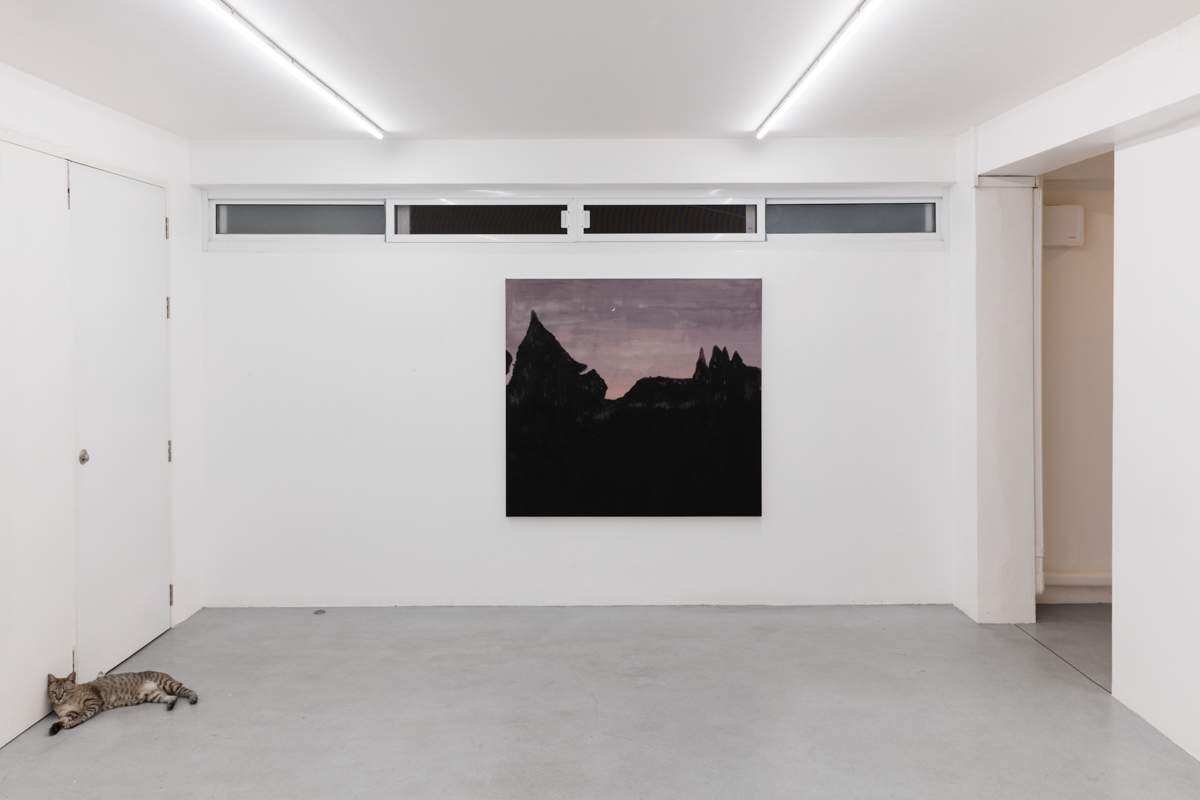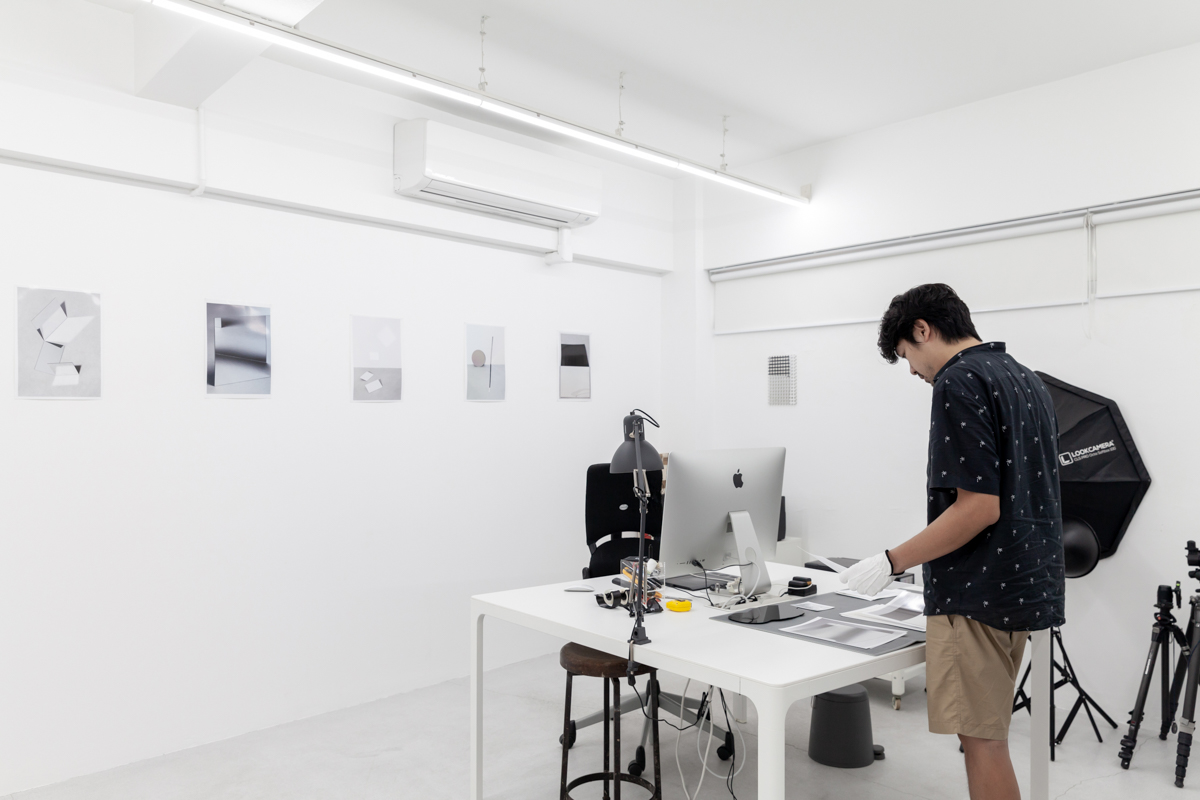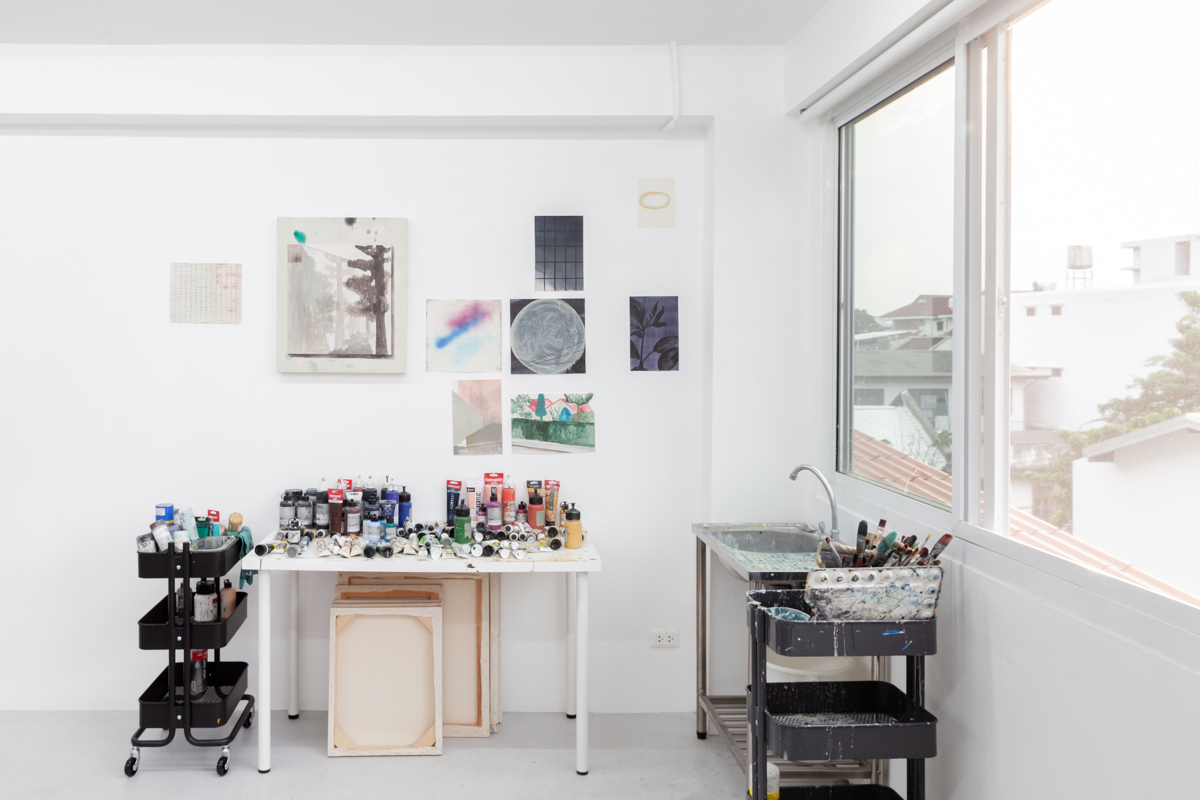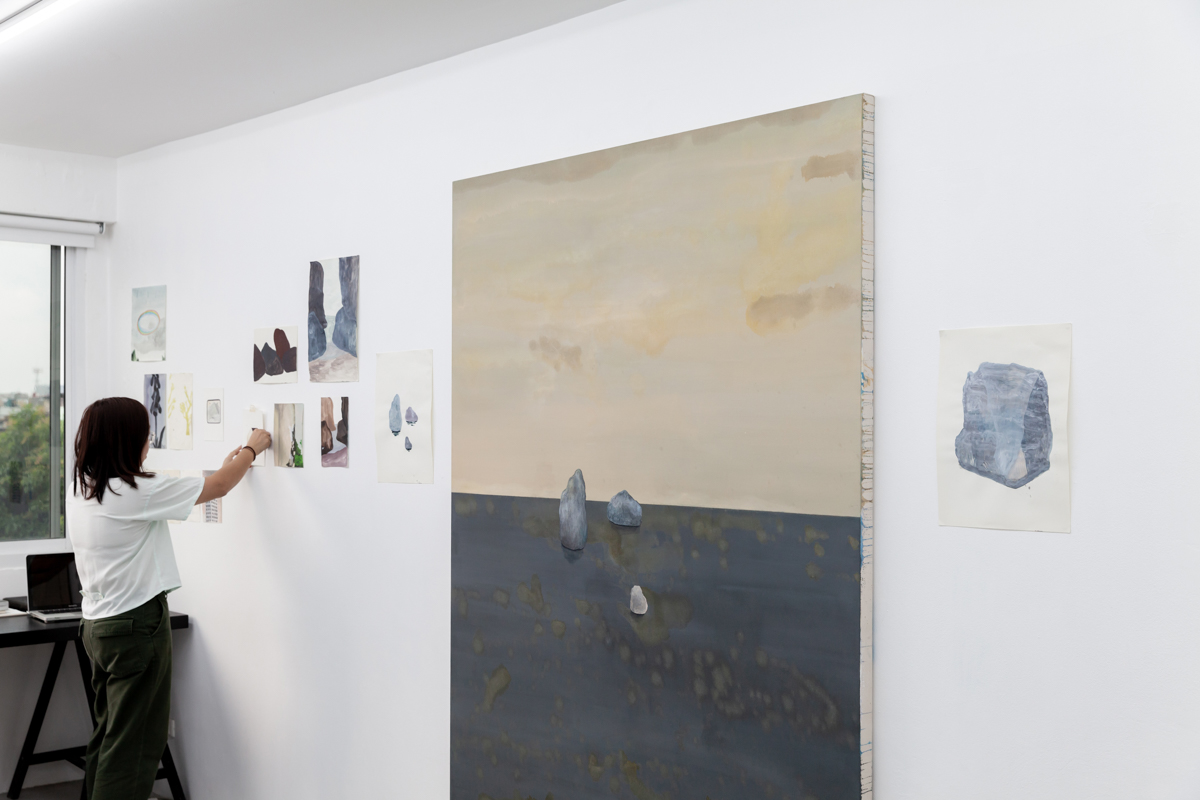Arter returning to Bangkok, Atit Sornsongkram and Prae Pupityastaporn decided to renovate an old in mail printing factory into their artist studios

Prae Pupityastaporn is a painter that creates momentary lingering scenes inspired by everyday life; whether it be through forming mental imagery whilst reading a book, or being struck by the many displaced scenarios while moving through Bangkok. As for Atit Sornsongkram, he is an artist that uses photography as a medium. He deals with the assumption one makes towards photography, questioning it and paradoxically creating an image out of it once more. Experimentation is the key to his process, resulting in his photographs achieving a crisp sensibility, yet somehow with an illusionary-likeness.
After having spent 10 years in Germany, both of them decided to relocate back to Bangkok once more. After months and months of intense planning, they decided to renovate two floors of an old printing factory into their new home, intentionally converting the bottom floor to enclose two studios, one each for Sornsongrkram and Pupityastaporn themselves. The outcomes of the studios are describable as clean rectangular rooms with white walls, definable as to embrace the classic form of the ‘white cube.’ The decisive choice made was to also allow for the space to be interchangeable between that of a private studio and an exhibition area for open studio events.
Sornsongkram and Pupityastaporn were the ones mainly involved in the process of systematically designing the studios since they are the users who would know best what elements are to be considered in order to maximize the functionality of the space. They simultaneously put a lot of attention into thinking about the correlation the studio has towards the house as well. The studios themselves are located on the bottom floor, with a living room inhabiting the center and acting as the connector of the two spaces. The top floor then houses the residential spaces which are the bedroom and the kitchen. This system of separation could be perceived as the segregation of the working and the living area, or from another viewpoint, it draws the line between the ‘public’ and the ‘private.’ Speaking of the latter, the segregation enables the ability for Sornsongkram and Pupityastaporn to host open studios that welcome people without having to worry about exposing the more intimate parts of their home, thus marking clearly the areas the public are alowed to access. The entry of the open studio could be made directly into Pupityastaporn’s painting studio, through to the common area, and lastly continuing on into Sornsongkram’s photography studio.
The act of open studios for art students within Europe is a mandatory thing, whilst it is seemingly different here in Thailand where the culture is not that apparent. This not only allows you to showcase your work but also to gain feedback from the audience. Through their experience with open studios and also of sharing studios with other students in Germany, they are able to grasp how important it is to be able to receive constructive criticism from other people. In order for an artist to grow, Sornsongrkram and Pupityastaporn strongly believe that it is crucial to have someone who is able to assess your artworks. Like looking into a mirror, a perspective from another person who has seen the development of your work regularly is vital. The fact that they each have separate studios allows for each to have solitude and autonomy within their own private spaces, yet they are able to have their own sessions of critiques whenever wanted as well. Even though they work in separate mediums, they are able to give each other fresh perspectives that each of them may not be aware of in their own spectrum of the field.


จิตรกรรมของ แพร พู่พิทยาสถาพร ได้แรงบันดาลใจจากฉากบางตอนในชีวิตประจำวันไม่ว่าจะเป็นภาพที่ตาเห็นระหว่างเดินทาง หรือภาพจินตนาการที่เกิดขึ้นขณะอ่านหนังสือ อธิษว์ ศรสงคราม ทำงานภาพถ่ายบนความคาดหวังที่ผู้ชมมีต่อสื่อชนิดนี้ และสร้าง “ภาพ” จากคำถามและข้อสมมติฐานของความเป็นภาพถ่าย การทดลองเป็นกระบวนการสำคัญในการทำงานของเขา และเป็นที่มาของภาพถ่ายที่กระตุ้นความรู้สึกและลวงตาไปพร้อมๆ กัน
หลังจากใช้ชีวิตอยู่ในเยอรมนี 10 ปี ทั้งคู่ตัดสินใจย้ายกลับมากรุงเทพฯ อีกครั้ง และหลังจากใช้เวลาคิดอยู่นาน ทั้งคู่ก็นำโรงพิมพ์เก่าย่านถนนพระสุเมรุ มาปรับปรุงและดัดแปลงเป็นบ้านและสตูดิโอ ชั้นบนถูกจัดเป็นส่วนพักอาศัย ส่วนชั้นล่างแบ่งเป็นสตูดิโอ 2 สองห้อง การรีโนเวทครั้งนี้เสร็จออกมาเป็นสตูดิโอผนังสีขาวมาตรฐานคล้ายกับหอศิลป์ ซึ่งทำให้มันยืดหยุ่นต่อการปรับการใช้งานจาก private studio มาเป็น open studio ได้ในทุกโอกาส
ด้วยความที่เป็นสตูดิโอของตัวเอง อธิษว์และแพรจึงลงมือออกแบบสตูดิโอแห่งนี้เองทั้งหมด ทั้งคู่คำนึงถึงความสัมพันธ์ระหว่างสตูดิโอกับบ้าน ชั้นล่างที่เป็นสตูดิโอถูกขั้นกลางด้วยห้องนั่งเล่นที่เป็นจุดเชื่อมต่อระหว่างสตูดิโอสองห้องและชั้นบน ส่วนพักอาศัยซึ่งประกอบด้วยห้องนอนและห้องครัว ซึ่งนอกจากจะช่วยแบ่งพื้นที่ทำงานออกจากพื้นที่พักผ่อน มันยังเป็นการขีดเส้นแบ่งระหว่างพื้นที่สาธารณะกับพื้นที่ส่วนตัวไปพร้อมกัน ทั้งคู่เล่าว่าการแบ่งพื้นที่แบบนี้ทำให้พวกเขาสามารถเปิดให้คนเข้ามายังพื้นที่สตูดิโอได้โดยไม่ต้องกังวลว่าแขกจะเข้ามาข้องเกี่ยวกับพื้นที่ส่วนตัว การเข้าถึงพื้นที่จะเริ่มจาก open studio ของแพร ถัดเข้ามาคือพื้นที่ส่วนกลาง และด้านในสุดเป็นสตูดิโอภาพถ่ายของอธิษว์
การเปิด open studio ถือเป็นเรื่องปกติที่ทำกันในยุโรป แต่ในไทยเรายังไม่เห็นวัฒนธรรมแบบนี้มากนัก ทั้งๆ ที่นอกจากการจัดงานแบบนี้จะเปิดให้คนได้มาเห็นผลงาน มันยังทำให้เราได้ฟีดแบ็คจากคนดูอีกด้วย การแชร์พื้นที่ทำงานและเปิด open studio กับนักเรียนศิลปะในเยอรมนีเป็นปกติ ทำให้ทั้งคู่เห็นความสำคัญของการรับฟังคำวิจารณ์จากคนอื่นๆ พวกเขาเชื่อว่าการรับฟังฟีดแบ็คจากคนอื่นก็เหมือนกับการส่องกระจก โดยเฉพาะจากคนที่เห็นพัฒนาการของผลงานของเราอย่างต่อเนื่อง ข้อดีของการแยกพื้นที่ทำงานในพื้นที่เดียวกันทำให้พวกเขามีช่วงเวลาการทำงานเป็นของตัวเอง ในขณะเดียวกันก็เปิดโอกาสให้เกิดบทสนทนาบนชิ้นงานอยู่ตลอดเวลา โดยเฉพาะกับศิลปินคู่นี้ มุมมองจากการทำงานศิลปะที่แตกต่างส่งผลโดยตรงต่อคุณภาพของคำวิจารณ์ที่มีให้กันและกัน


Read the full article on art4d No.264 | Click Here
TEXT: VIRADA BANJURTRUNGKAJORN
PHOTO: KETSIREE WONGWAN / ATIT SORNSONGKRAM
atitsornsongkram.com
praepupityastaporn.com
